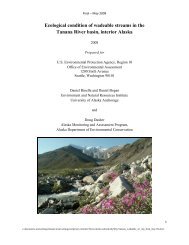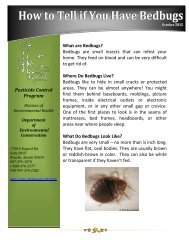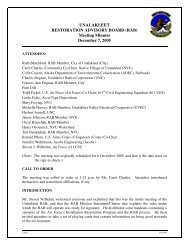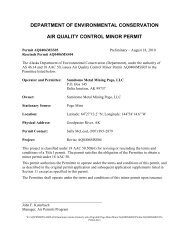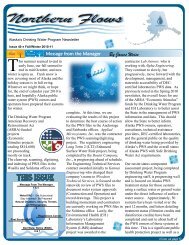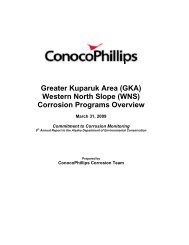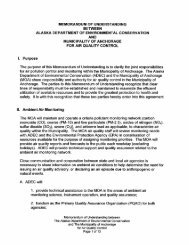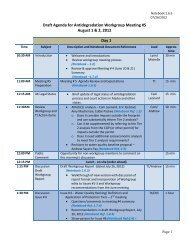2012 Ocean Ranger Guidebook Revision 3-7-12 - Alaska ...
2012 Ocean Ranger Guidebook Revision 3-7-12 - Alaska ...
2012 Ocean Ranger Guidebook Revision 3-7-12 - Alaska ...
Create successful ePaper yourself
Turn your PDF publications into a flip-book with our unique Google optimized e-Paper software.
<strong>20<strong>12</strong></strong> <strong>Ocean</strong> <strong>Ranger</strong> <strong>Guidebook</strong> 3-7-<strong>12</strong><br />
Background: There are many hazards on a ship, and these can affect the crew, passengers and the<br />
environment. Safety items on board can more or less divided in three areas:<br />
Safety items related affecting directly to the passengers in areas designated for passengers in<br />
normal operations. Examples include the hotel areas, cabins, stairwells the areas where the<br />
passengers are allowed to enter.<br />
Safety items related affecting directly to the crew in areas designated for crew only in normal<br />
operations. Examples include galleys, winch deck, engine room, storage areas etc.<br />
Safety items related affecting crew / passengers in areas for combined designation in normal<br />
operations. Examples are gangways, stairwells etc.<br />
Safety can be related to sanitation items; however, safety items are in most cases stand alone items. In<br />
previous seasons we found that most safety items were “common sense” items and could be easily<br />
fixed. A few examples included fried electric cords on grill units, deck trip hazard (anchor bolt<br />
protrusion) of temporarily removed deck light post. All these items were safety items and should be<br />
reported.<br />
What to check for: During daily rounds watch for unsafe conditions for either passengers or crews.<br />
Although the list is not exhaustive, below are listed a few items:<br />
Passenger related directly (hotel): Burnt or un-insulated electric extension cords; electric cords<br />
on deck (trip hazard); other trip hazards on deck (anchor bolts light post); safety signs missing<br />
swimming pools; overflow of water on decks (slippery); protruding electric wiring in elevators<br />
etc.; gangway securing, etc.<br />
Crew related directly<br />
o Hotel: trip hazards; stack storage of garbage or other materials; sanitation cleaning with<br />
chemicals using no personal protection gear; storage of reactive chemicals together;<br />
ladders step stools used while not secured; etc.<br />
o Deck: Paint operations with no safety (fall protection); ropes storage on deck; winch<br />
handle position / operational instructions missing or not clear; open electric sockets or<br />
connectors; winch/capstan safety emergency stop not labeled or identified; lifeboat<br />
maintenance operations ladder (not secure) / greasing cables etc.<br />
o Engine Room / Deck / Operations: Working with chemicals with no personal protection<br />
gear or ventilation; deck floor platting removed with no warnings or signs; open<br />
manholes with no signs; water tight doors open under all vessel conditions; welding<br />
cutting or grinding with no protection for avoidance of fire; non tagged out switch gear /<br />
controls during maintenance repair operations; leaking water on electric control boxes;<br />
etc.<br />
Crew & Passengers: In fact all these above listed items could sooner or later affect the crew,<br />
however here a few examples of “combined” items:<br />
o Hotel / Deck: Overhead maintenance / repair operations with no tool and or parts fall<br />
protection or precautions; no working areas fenced off or identified; air hoses and<br />
electric cables trip hazards; gangway not securely attached to the vessel; ramp plates<br />
172






